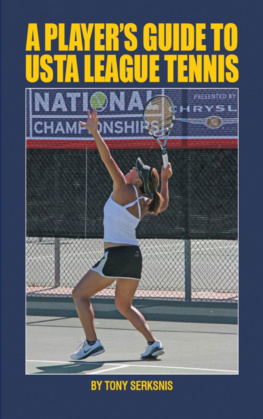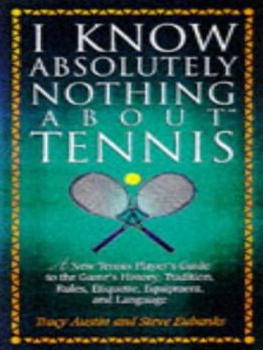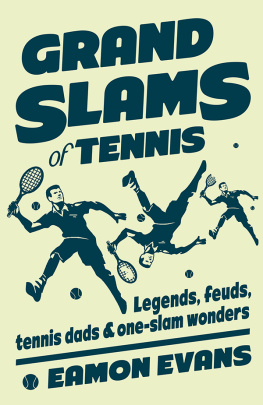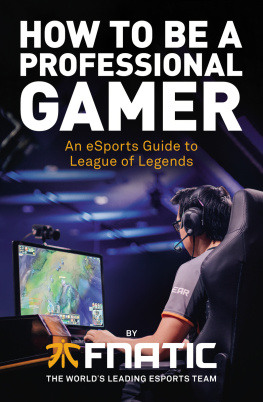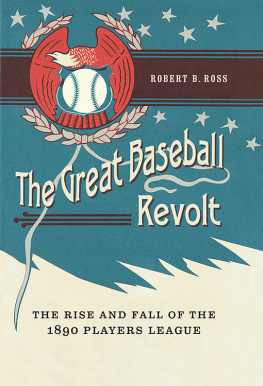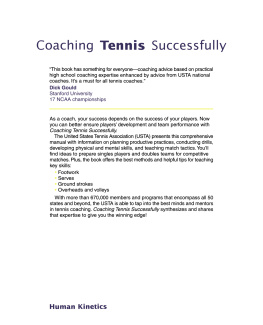
A Players Guide To USTA League Tennis is published by New Chapter Press (www.NewChapterMedia.com) and distributed by the Independent Publishers Group (www.IPGBook.com).
@ Tony Serksnis
The cover photo - and photos on pages are courtesy of Scott Dance.
ISBN - 978-094-225-7830
New Chapter Press would also like to thank Mujeer Ahmed, Cynthia Lum, Ewing Walker, Scott Dance and Manfred Wenas for their help with this project.
Cover & book design by Mujeer Ahmed.
Printed in Canada.
CONTENTS
FROM THE AUTHOR
I have been playing tennis in the United States Tennis Associations League Tennis program since I moved to Mountain View, California in 1985. However, my tennis roots are from playing summers as a teen in Cleveland, Ohio. I wish I still had my original wooden Wilson racquet, which had one of those racquet anti-warp guards. It was one where you were always tightening and un-tightening the screws to make sure your racquet didnt get a twisted head due to humidity in those regions of the Midwest. I can also recall using a single (white!) tennis ball for an entire summer. We didnt have money to be extravagant with such things as tennis balls.
Upon arriving in Mountain View, I could see many public court parks that looked inviting to play at. Mountain View also had a tennis club that was mainly social at the time. After joining that club (dues were only $20 per year), I was quick to make friends with the other club members and participated in ladders and club tournaments. It wasnt long before I noticed that there was some sort of league play which turned out to be the USTA League Tennis program and the club sponsored teams at a few levels.
Back in those days, we were given National Tennis Rating Program (NTRP) ratings individually by USTA officials. One would gather with several other individuals in search of their correct rating, play perhaps 15 minutes, and your rating was established. I started with an NTRP rating of 3.5. I did fairly well, and in two years, I got bumped up to 4.0. I stayed at that level for 23 years (yes, 23 years!) until 2009, when I was moved to a 4.5 rating at the age of 63. That is something I am very proud of. Today, NTRP ratings occur without external verification in that one self-rates against published guidelines. After playing a few matches, and definitely after an entire season of competitive play, one gets a computer rating based upon ones record and strength-of-opponent.
League tennis has then been a serious part of my life. I used to run marathons, with tennis being a healthy alternative exercise, but now (due to knees being pounded by over 20 marathons) tennis is my main exercise and hobby. I hope to continue league play for as long as my body holds up and league play still remains fun. Since league play is based on playing people with similar abilities, even if ones level decreases over the years, one can continue to compete at possibly lower levels. Players can have any skill level before their very first rating. As I mentioned earlier, I hadnt played much tennis at all before getting an official rating and starting league play. Others may have been on high school teams or even played in college. Thus, USTA League Tennis provides for the entire range of beginning skill levels.
My viewpoint is from a player who plays in sunny California, where we are indeed fortunate to experience very tennis-friendly weather for most of the year. Here, the rainy season lasts for a short period at the beginning of the calendar year. This could lead to a rather narrow view of the entire USTA. One thing is for certain -- the competition level doesnt diminish beyond the Northern California region. Every USTA team steps out on to the court with the hopes of both winning and having an enjoyable experience.
In those 20-plus years of playing USTA League Tennis, Ive served as team member, captain, and co-captain. In my first season, our team was fortunate enough to actually win our league and qualify for our local district championship and then went on to qualify for the USTA Northern California Sectional Championships. However, we were denied in our attempt to qualify for the USTA League Tennis National Championships.
Ive decided to position this book from the captains perspective. The captain certainly must function as an organizer, leader and motivational coach to the rest of the team. All of that for no overt compensation other than knowing that this was the best one could do. Most of the time, the captain is also a player, so while also trying to lead the team, the captain is also trying to improve their own game as player. The captain could be looked upon as the CEO & CFO of the team.
My first thought was to write (and title) the book from a captains viewpoint but I believe that all players of the USTA will find the book of value and thus, this is a Players Guide. I believe that if all players who are members of a USTA team look at the team from the perspective of the captain, the team will be richer for that perspective.
The United States Tennis Association defines its League Tennis program as follows; USTA League Tennis is organized, competitive team play for women and men age 18 and older of all abilities and experience. Whether youre new to the game or a former college player, theres a spot for you. Teams are made up of a minimum of five to eight players depending upon division. Teams and matches are set up according to NTRP ratings, so your teammates and opponents will be at your skill level. The competition is exciting, the atmosphere is social, and since players compete on teams, you have a built-in cheering section. Teams compete in four national divisions: Adult, Senior, Super Senior, and Mixed Doubles. The format features singles and doubles matches for adult leagues, and three doubles for seniors, super seniors, and mixed leagues.
I would add that USTA League Tennis is a way for people, who have just taken up the game of tennis, to play the sport in a competitive format. The USTA sets up this competitive format at various levels of skill, so that a person just needs to join and participate on a team to enjoy the competition. Playing against people of similar skill, who also are trying to win for their teams, will certainly improve ones own personal skills. It is a major charter of USTA League Tennis to permit tennis players to work on improving their personal tennis skills through a competitive (yet fun) environment. Any level of player is given the chance to compete against like-skilled players in a team environment.
USTA League Tennis is an organized way to compete at your own particular level. Thus, one just needs to join a team and the USTA will set up leagues within a local geographical area where the team can win local leagues and progress all the way to a national championship. There are few other sports that allow competition to continue beyond winning their local and regional championships and lead to a recognized national championship.
If a tennis-playing person moves from one region (or state) to another, USTA League Tennis provides an organized and consistent method to participate in a league that has uniform rules across the USA. As the USTA has 17 geographical regions within the USA, a player can expect a consistent set of league-playing rules and skill-level consistency throughout the entire league.
USTA League Tennis is fun. Its a low-expense hobby with a decent chance of improving ones fitness through competitive play. There is a social aspect to it in that one can pull for ones teammates and acquire a healthy respect for the skill of the opposition. Also, the USTA rules as stated in this book could be slightly different for your particular USTA Section, or may change slightly from year to year. The team captain should actually review the USTA rules for their USTA Section each year and print those rules out to keep with them. When issues arise during a match, the rules can be quoted to help resolve that issue. The USTA general rules are meant to cover all players in the USTA, but some different interpretations are offered by each USTA Section.
Next page
